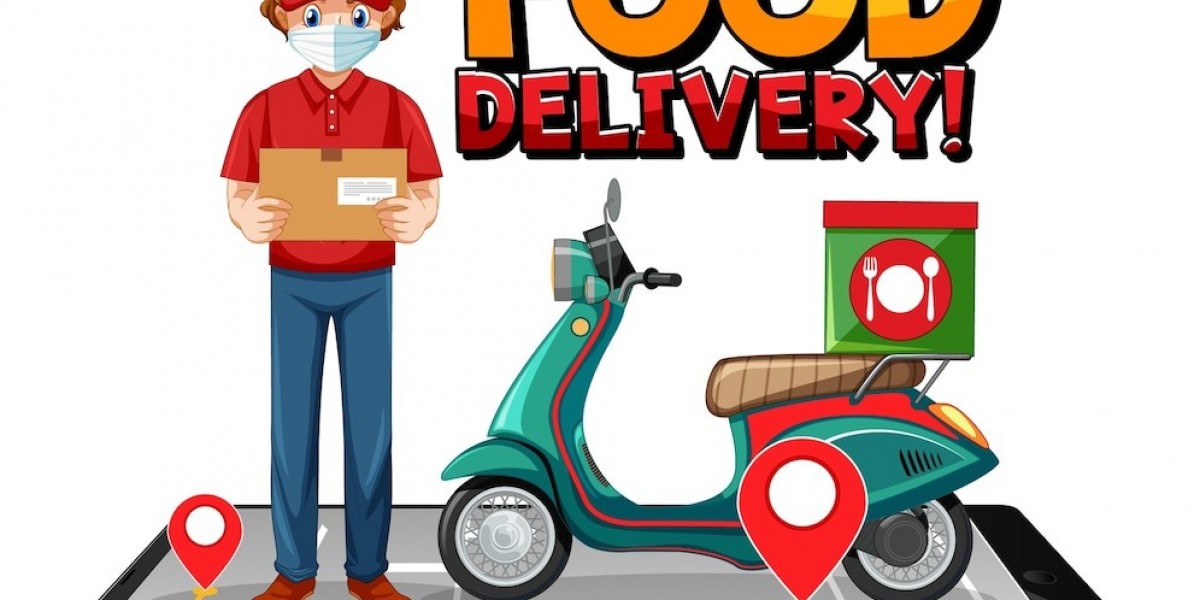With the rapid rise of online food ordering, creating a food delivery app has become an enticing business opportunity. Companies have built successful business models around delivering food, and this has paved the way for entrepreneurs to explore the industry. Developing a food delivery app requires careful planning, technical expertise, and an understanding of the market to ensure it meets both user expectations and business objectives.
Conduct Market Research and Define Your Niche
Before diving into development, it’s important to thoroughly research the food delivery market. Understanding the existing competition, user preferences, and pain points will help you identify opportunities and create a unique selling proposition (USP) for your app.
Analyze Competitors
Analyze major food delivery apps to identify their strengths and weaknesses. Learn what makes them popular and where they fall short. This insight will help you create an app that differentiates itself in the market.
Identify Target Audience
Who is your app designed for? Consider age groups, preferences, and lifestyles when defining your target audience. A deep understanding of your users will guide the design, functionality, and marketing of your app.
Find Your Niche
While general food delivery apps serve a broad audience, focusing on a specific niche can make your app stand out. You could specialize in delivering organic meals, offering healthy food options, or catering to specific dietary needs like vegan or gluten-free meals.
Choose the Right Business Model
A clear business model is essential for your app’s long-term sustainability. There are several models to consider when building a food delivery app:
Aggregator Model
In this model, your app serves as a platform that connects customers with restaurants. The restaurant handles the cooking and delivery, while your app takes care of the ordering and payment process. This model involves charging restaurants a commission for each order placed through the app.
Logistics Support Model
Here, your app not only connects customers with restaurants but also provides delivery services. This model involves setting up a logistics system to handle deliveries, requiring you to manage both the app and the delivery infrastructure.
Cloud Kitchen Model
Cloud kitchens, also known as virtual kitchens, prepare food exclusively for delivery. If you own a restaurant or plan to start a kitchen-only business, this model can be highly profitable. You operate the kitchen and manage the delivery service.
Outline the Key Features of Your App
To build a successful food delivery app, you need to identify the core features that will make it convenient and user-friendly. While advanced features can set your app apart, the core features must work smoothly and offer value to both customers and restaurants.
User Interface (UI) and User Experience (UX)
The UI/UX design is one of the most important aspects of any app. Ensure that your app has a clean, intuitive design that allows users to navigate easily. Keep the design consistent and focused on delivering a smooth user experience.
User Registration and Profiles
Users should be able to sign up easily, using options such as email, phone number, or social media accounts. Additionally, they should be able to create profiles where they can store delivery addresses, preferences, and order history.
Restaurant Listings and Menus
Display restaurant listings, allowing users to browse through available options. Each restaurant should have a detailed profile with its menu, ratings, reviews, and delivery details such as the estimated delivery time and charges.
Real-Time Order Tracking
Real-time tracking allows users to see the status of their orders, from when the restaurant accepts the order to when the delivery is en route. GPS tracking provides live updates on the delivery progress, enhancing transparency and customer satisfaction.
Payment Gateway Integration
Offer multiple payment options such as credit cards, debit cards, mobile wallets, and cash on delivery. Ensure the payment gateway is secure and user-friendly to facilitate smooth transactions.
Push Notifications
Push notifications keep users informed about their order status, special promotions, and app updates. They’re also a great tool to engage users with discounts and personalized offers.
Reviews and Ratings
Allow users to rate restaurants and delivery services. Reviews and ratings can guide new users in making decisions and also help restaurants improve their services.
Admin Dashboard
An admin panel is essential for managing restaurants, users, orders, and payments. It should offer analytics and reports to track app performance, user engagement, and revenue growth.
Choose the Right Technology Stack
Choosing the right technology stack is crucial for the app’s functionality, security, and scalability. The technology you select will depend on factors like the platform (iOS, Android, or both), your budget, and app complexity.
Backend Technologies
The backend is responsible for handling databases, server management, and app logic. Technologies such as Node.js, Python, and Ruby on Rails are popular choices for building scalable and efficient backend systems.
Frontend Development
The front end is what the users interact with. For mobile apps, you can develop native apps using Swift (iOS) and Kotlin (Android) or go for cross-platform development with frameworks like React Native or Flutter, which allows you to build apps for both iOS and Android with a single codebase.
Database Management
Databases like MySQL, PostgreSQL, or MongoDB are used to store and manage user data, order history, restaurant details, and other app-related information.
Payment Integration
Payment gateways such as Stripe, PayPal, or Braintree ensure secure and smooth transactions. Choose a payment solution that aligns with your target market’s preferred methods.
Design and Develop Your App
Once you have defined the features and chosen your technology stack, the next step is designing and developing your app.
Wireframing and Prototyping
Before starting full-fledged development, create wireframes and prototypes to visualize the app’s structure and user flow. This helps in identifying any design flaws early on and ensures that the app development process is smooth.
Frontend and Backend Development
In the development phase, your team will build both the frontend (user-facing) and backend (server-side) components. Collaboration between developers, designers, and QA testers is key to ensuring the app works seamlessly.
Testing the App
Testing is a critical step to identify bugs, usability issues, and security vulnerabilities. Conduct extensive testing on different devices and operating systems to ensure the app functions smoothly for all users.
Launch Your App
Once the app is developed and tested, it’s time to launch it in the app stores. The launch process involves preparing your app for release, submitting it to the respective stores, and making it available for users to download.
App Store Optimization (ASO)
Optimize your app listing by using the right keywords, creating compelling descriptions, and uploading high-quality images or videos. Good ASO practices help your app rank higher in search results, attracting more downloads.
Marketing and Promotion
Launch marketing campaigns across various channels such as social media, search engines, and email. Offering introductory discounts, referral programs, and influencer collaborations can help create buzz and attract early adopters.
Monitor Performance and Gather Feedback
After launching your app, closely monitor its performance through analytics tools. Gather user feedback, track key performance indicators (KPIs), and continually update your app based on user preferences and technological advancements.
Regular Updates and Maintenance
Keep your app updated with new features, security patches, and bug fixes. Regular updates show users that the app is well-maintained and evolving to meet their needs.
Conclusion
Developing a food delivery app requires thorough planning, a solid development strategy, and market understanding. Partnering with an on-demand app development company can help you incorporate essential features, choose the right technology stack, and continuously improve your app based on user feedback, ensuring success in a competitive market.


